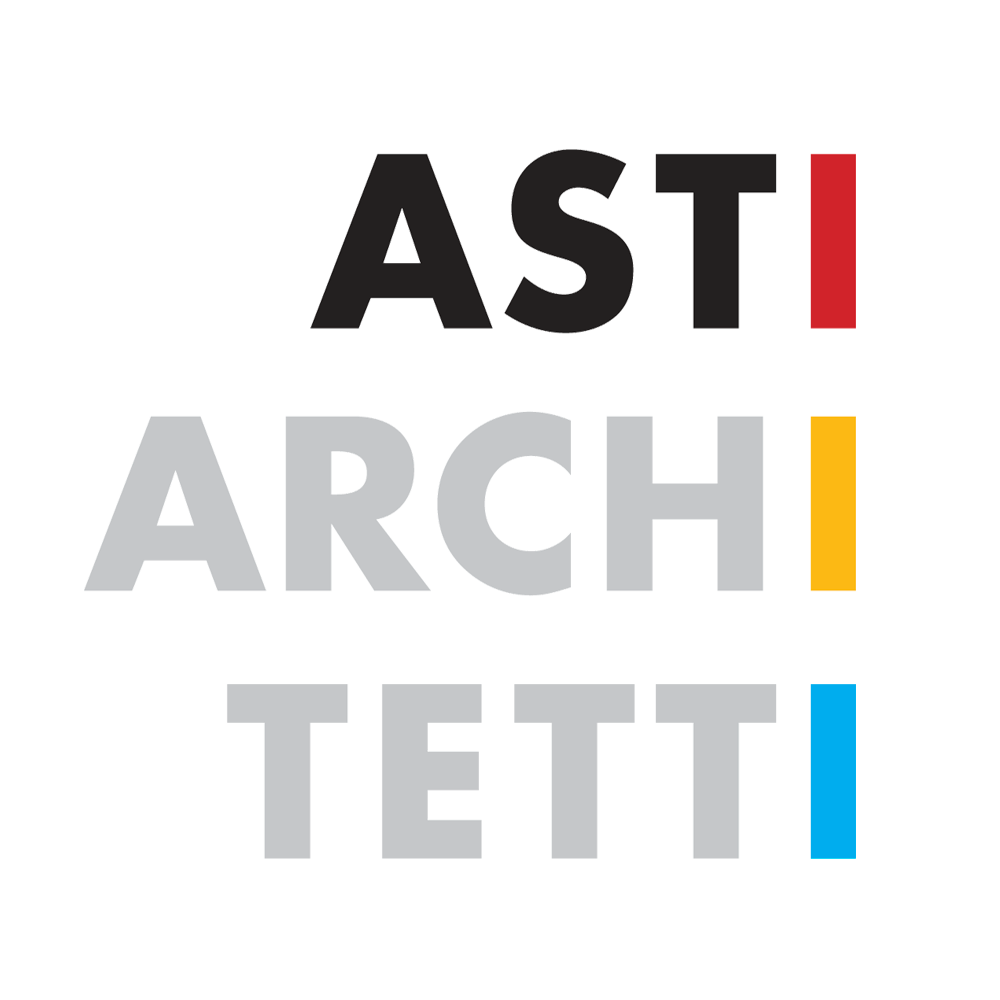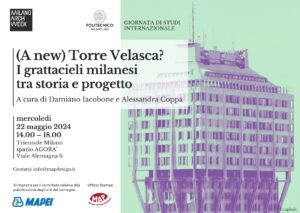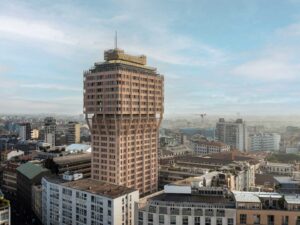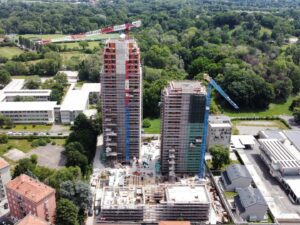Asti Architetti redesigned the post-modern block in Via Nizzoli, changing its use from office to residential, with large terraces and green technologies.
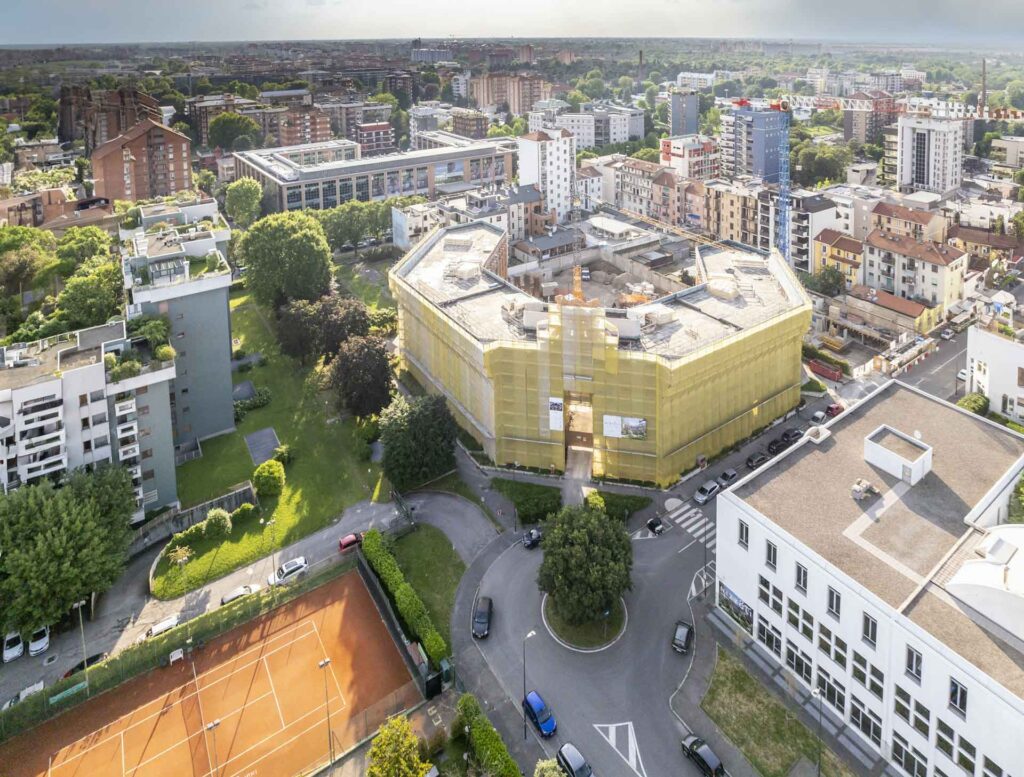
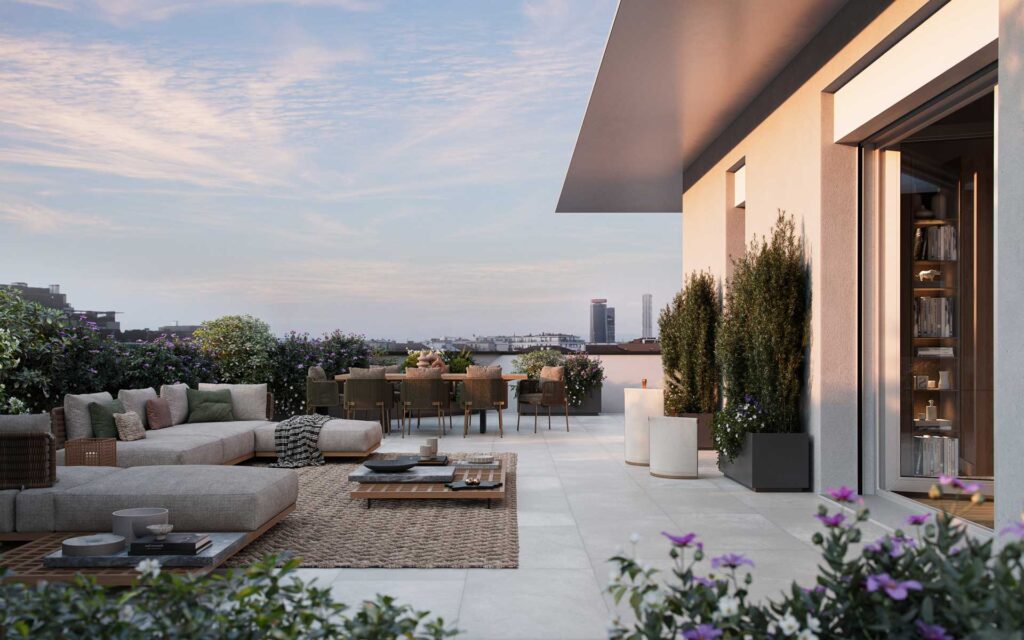

Located in the Arzaga district, just a short walk from the Primaticcio metro station, this complex has become a green oasis where you can live according to the principles of environmental sustainability.
With a lush internal garden of over 2600 square metres, the building uses groundwater through heat pumps to provide heating, cooling and hot water with very high energy efficiency and zero CO2 production. Thanks to excellent thermal insulation and a latest-generation photovoltaic system, the building offers high performance with low environmental impact.
Prior to the design intervention of Asti Architetti, the building was characterised by a strong post-modern style, detached from its surroundings in terms of use and architectural design, and characterised instead by a large presence of residential buildings with classical horizontal terracing systems.
The main building, which still occupies an entire block, is an incomplete octagon, with three sides missing to the west, leaving space for an open garden.
The main entrance, on via Nizzoli, was characterised by a kind of triumphal arch surmounted by two female figures holding a Greco-Roman medallion. At the base of the building there were two large volutes, also painted in orange.
Historical research has shown that the building was constructed by the members of the Nizzoli studio about ten years after the architect’s death (1969) and that it does not appear on the Milan City Council’s list of “buildings and areas of historical-architectural and modern importance”.
Asti Architetti’s intervention – carried out for the InvestiRE SGR property – focused on the renovation of the building with a change of use from office to residential and an extension with a change in the height of the building.
The design by Asti Architetti preserves the architectural language and urban characteristics of the area, while adding two new floors on the roof to replace the existing technical rooms. The penthouse and the super attic are set back from the line of the existing façade.
“With the intention of preserving and respecting the existing structure, the new design proposal has retained the large flared portal of the entrance, together with those peculiar features typical of the post-modern movement, namely the statues at the top and the volutes in the ground connection. The original crown of the building has been retained to revive the idea of 2D architecture, almost like a stage set, as if the building were folding like origami”.
The street façades have been completely preserved, the only intervention deemed necessary for the new use being the creation of loggias “hollowed out” of the volume, respecting the pitch of the existing holes without altering the overall design.
The two new volumes of the building, the attic and the super-attic, speak a delicate language, expressed by the predominant colour, white, which blends in with the building’s original façades.
In terms of finishes, the main street façade retains the stonework on either side of the portal, and the main portal is painted dark grey, resulting in new grey window frames.
The proposed new design fully respects the original materials, with exposed brick for the internal elevations facing the private courtyard – already present, but revisited in a more contemporary key – and white plaster for the street frontages.
“The internal fronts are characterised by a terraced system and bronze-coloured metal slats that pleasantly characterise the large courtyard of the condominium and, together with the lush vegetation, add dynamism and richness to the space”, underlines Paolo Asti.
Spacious balconies blur the boundaries between indoors and outdoors, between home and nature.
Nizzoli 8 offers a wide range of apartments, from attics with large terraces to four-, three- and two-room apartments with loggias overlooking the internal garden.
“The climate in Milan has changed a lot in the last few decades: it has warmed up a few degrees and the humidity has dropped. People’s lifestyles have improved and they have a much happier relationship with the outside world than in the past: This new environmental connotation has conditioned the design with the addition of “filters” between the inside and the outside: terraces. Terraces of different shapes and sizes that will characterise the Milanese residential buildings of the future, not just balconies, but real ‘pieces of home’ in terms of size, services and facilities, as in Nizzoli8’s project”.
The complex also offers exclusive services such as a gym, lockers for online orders, coworking spaces and event rooms where you can spend time with family or friends, making it a futuristic residential model.
https://nizzoli8.it/
